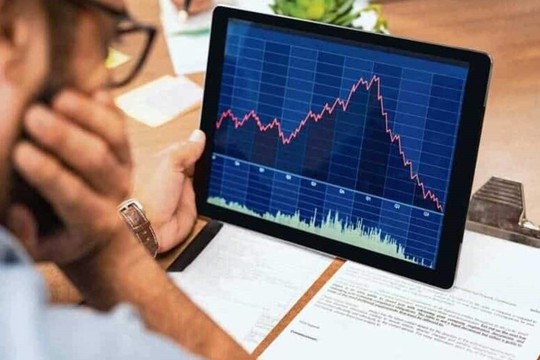Since the start of the war in Ukraine, the question of the size of the Russian and Chinese economies — relative to Western economies — has become highly significant, notes ‘The American affairs journal’.
Early on, policymakers compared the Russian GDP to that of Spain or Italy, for example, as a way of minimizing its global importance. Now that these geopolitical tensions have resurrected Cold War blocs, it is crucial to clarify our understanding of the real size and importance of these economies.
Simple GDP statistics have arguably lulled the West into a false sense of security. By GDP, Western economies appear dominant and their capacity to impose sanctions decisive. But the West’s reliance on service sectors — and the relative weakness of directly productive sectors like manufacturing, mining, and agriculture — introduces critical vulnerabilities in goods production and supply chains.
In times of peace and unimpeded trade, such vulnerabilities may seem insignificant. In periods of deglobalization, geopolitical competition, and state-versus-state conflict, however, these weaknesses can have profound impacts, while basic productive sectors take on greater importance. A clearer view of these realities implies a reassessment of the West’s strategic position.
Since World War II, GDP has been the indicator typically used to determine the size and power of an economy. GDP measures the wealth created in a given period, as valued by the market. While it is an important indicator, it also imperfectly assesses real wealth and does not fully measure the productive capacities of a country.
For these reasons, the purchasing power parity (or PPP) method is frequently used. PPP measures capture relative prices. In other words, PPP captures the relative price ratios, in national currency, of the same good or service across different countries.
If we look at the United States, Germany, China, and Russia on the basis of exchange rate and PPP comparisons, several conclusions jump out.
First, it is clear that the exchange rate method significantly underestimates the size of the Chinese and Russian economies. Using the exchange rate method, the size of the Russian economy is half that of Germany’s and around 130 percent of Spain’s. China, while growing more rapidly, is around two-thirds of the U.S. economy in 2019. With the PPP method, however, the profile of the Russian and Chinese economies changes drastically. The Russian economy almost becomes the equal of the German economy, while the Chinese economy reaches parity with the U.S. economy in 2016 and has since taken a slight lead.
At first glance, we notice that Russia is situated between China, where services represent only 49 percent of GDP, and countries like the United States, France, or Italy, where services represent at least 75 percent of GDP. Germany is in an intermediate position, with 69 percent of its GDP coming from services. Russia’s position can be explained by the size of its industrial and agricultural sectors — a makeup that affects its real weight.
Russia and China’s GDP are significantly larger when we consider only directly productive activities.
China’s economy becomes nine times stronger than Germany’s and three times as strong as that of the United States. The Russian economy also ends up outranking the German economy and clocks in at more than twice as strong as the French economy. This completely changes our vision of these economies — far from the claims that Russia ranks at the same level as Spain or that China still lags far behind the United States.
The final method for assessing the scale of the Russian economy is to measure Russia’s place in global exports of key products.
In 2019, Russia was the world’s second-largest producer of platinum, cobalt, and vanadium, the third-largest producer of gold and nickel, the fourth-largest producer of silver and phosphates, the fifth-largest producer of iron ore, and the sixth-largest producer of uranium and lead. The main product of Russian agriculture is cereals; Russia is the world’s largest exporter of wheat and the largest producer of barley, buckwheat, oats, and rye, as well as the second-largest producer of sunflower seeds.
Of course, Russia is the world’s largest exporter of gas (and has the world’s largest reserves) and the second-largest exporter of crude oil. This gives Russia, beyond its industrial capacities, a central position in the raw materials trade, a position that explains its alliance with China.
Any interruption or sharp reduction in trade with Russia is likely to cause major disruptions in commodity markets.
It is now obvious why the attempt to represent the economies of China and Russia solely through GDP, using the exchange rate method, results in a misleading image of the economic power of these two countries — and a picture that can harm decision-making.
read more in our Telegram-channel https://t.me/The_International_Affairs

 10:02 25.04.2023 •
10:02 25.04.2023 •























